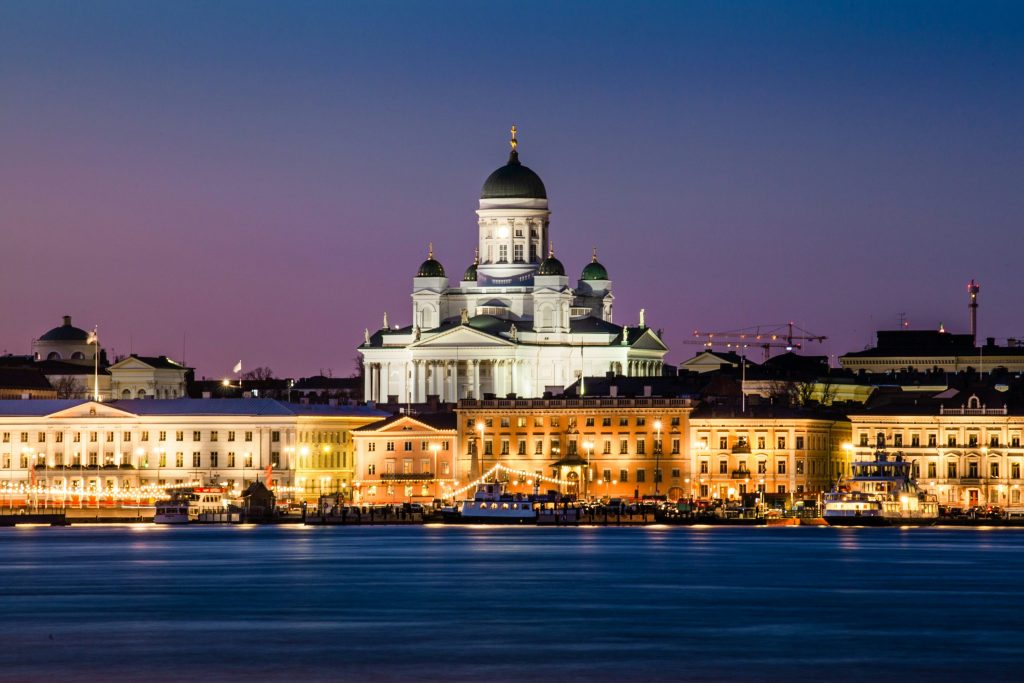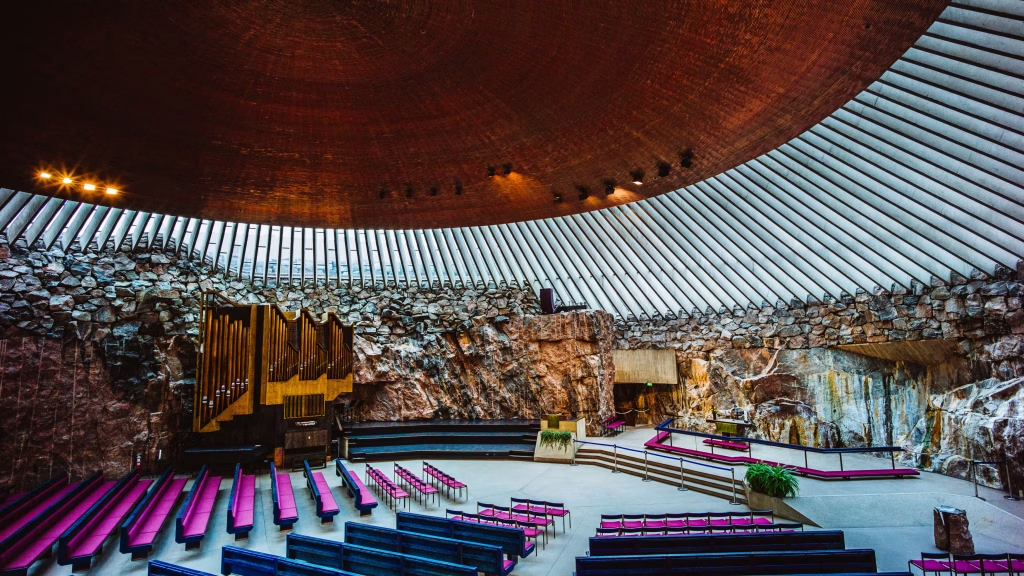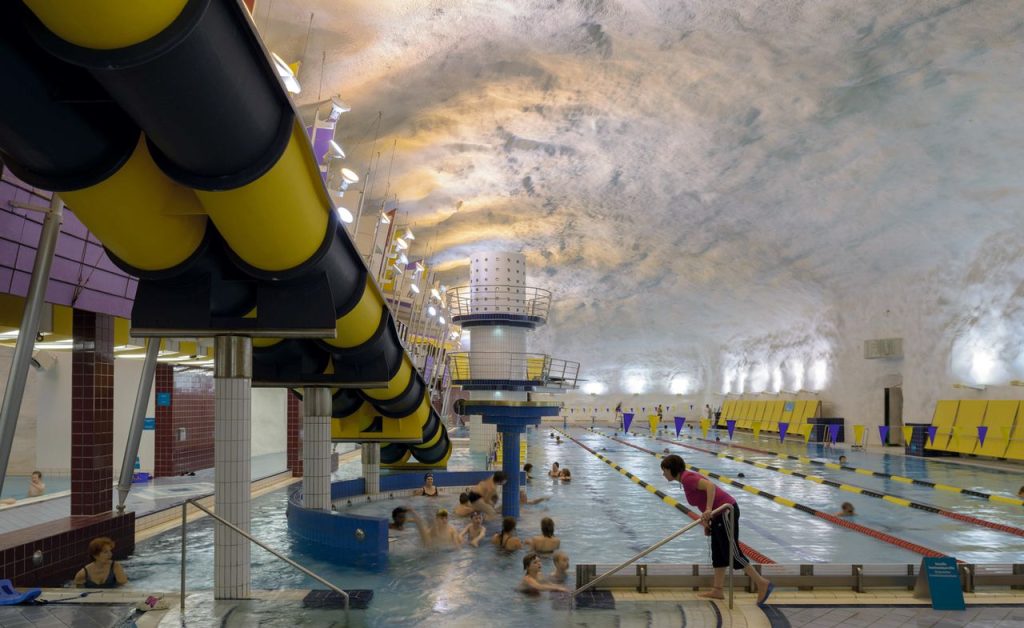
Helsinki is a city with a secret beneath its streets—one of the most extensive and sophisticated underground bunker systems in the world. Designed to provide shelter for citizens in emergencies, these bunkers are more than just relics of Finland’s cautious history.
They double as sports arenas, swimming pools, shopping centers, and even entertainment venues. As Finland continues to expand its underground network, Helsinki’s subterranean world becomes even more fascinating. This guide takes an in-depth look at the history, purpose, and future of Helsinki’s bunkers—and how you can experience them firsthand.
1. The Origins of Helsinki’s Underground Bunkers
Why Does Helsinki Have So Many Bunkers?
Helsinki’s extensive underground infrastructure is a product of its unique geopolitical position. As a neighbor to Russia, Finland has long been aware of the importance of civil defense. During the Cold War, the country adopted a policy of neutrality, but it remained vigilant in preparing for possible military conflicts or nuclear threats. As a result, Helsinki began developing a vast system of underground shelters capable of protecting its citizens in times of crisis.
A Legacy of Civil Defense
The construction of these bunkers began in the mid-20th century, with many of them being built during the 1960s and 1970s. Finland’s approach was different from that of many other countries—it didn’t just build shelters, it integrated them into everyday life. Today, these underground spaces serve dual purposes, ensuring they are always maintained and ready for emergency use.
How Many Bunkers Are There?
Helsinki has around 5,500 underground shelters, capable of protecting approximately 900,000 people—more than the city’s entire population. Some of these are small, private bunkers in apartment buildings, while others are massive, multi-functional spaces hidden beneath the streets.

2. What’s Inside Helsinki’s Bunkers?
Key Features of the Bunkers
The bunkers vary in size and function, but most share the following features:
Reinforced Concrete Walls – Designed to withstand bomb blasts, radiation, and even chemical attacks.
Air Filtration Systems – To provide clean air in the event of biological or chemical threats.
Water and Food Storage – Enough supplies to sustain people for extended periods.
Sleeping Areas – Equipped with bunk beds or mats for emergency sheltering.
Emergency Power and Lighting – Ensuring the bunkers remain functional even if the power grid fails.
Communication Facilities – Allowing authorities to provide information to those inside.

Multi-Purpose Uses
Rather than sitting empty, many of these bunkers have been repurposed into everyday facilities:
Swimming Pools – The Itäkeskus Swimming Hall is built inside a bunker and serves as a civilian shelter if needed.
Ice Hockey Rinks – Some bunkers double as sports arenas, like the Merihaan Bunker, used for ice hockey training.
Parking Garages – Many underground parking lots in Helsinki are designed to convert into shelters within hours.
Shopping Centers & Public Spaces – Areas like Kamppi’s Underground City house shops and restaurants while also providing emergency shelter capabilities.

3. How to Experience Helsinki’s Bunkers as a Visitor
While some bunkers are restricted to the public, there are several ways to explore Helsinki’s underground world.
Guided Tours of Helsinki’s Underground Spaces
To truly understand the scale and sophistication of the bunker network, book a guided tour. Some options include:
Cold War & Bunker Tours – Helsinki’s City Museum and independent tour operators occasionally offer bunker tours explaining their history and function.
Tytyri Mine Experience – While not a civil defense bunker, this former limestone mine 100 meters underground provides insight into Helsinki’s subterranean infrastructure.
Subterranean Helsinki Walking Tours – These focus on how the city has utilized underground space for everything from bunkers to shopping malls.

Visiting Public Bunker Spaces
If you prefer to explore at your own pace, check out these public spaces that double as bunkers:
Itäkeskus Swimming Hall – Enjoy a swim in Europe’s largest underground swimming hall, hidden beneath the city.
Merihaan Bunker – A sports complex that functions as an emergency shelter.
Kamppi’s Underground City – Visit this multi-use underground space to see how Helsinki integrates daily life with civil defense preparedness.
Töölö Parking Bunker – An underground parking garage that can be rapidly converted into a massive shelter.

4. The Future of Helsinki’s Underground Expansion
Why Is Helsinki Still Expanding Its Underground Network?
Finland continues to prioritize underground development for several reasons:
Security Concerns – Given geopolitical tensions in Europe, Finland maintains a proactive civil defense strategy.
Urban Space Efficiency – With limited surface area, underground spaces help optimize urban planning.
Climate Protection – Underground spaces provide natural insulation, making them energy-efficient.

What’s Being Built?
The city has ambitious plans for expanding its subterranean world. Some upcoming projects include:
New Underground Transportation Hubs – Enhancing Helsinki’s metro and underground pedestrian pathways.
Underground Data Centers – Using Finland’s cold climate to create energy-efficient data storage facilities.
Expanding Existing Bunkers – Many of the shelters are being upgraded with modern technology.
More Recreational Facilities – Plans include more underground gyms, pools, and even a subterranean park.
Could Helsinki Be the First Fully Underground City?
While it won’t replace surface-level life, Helsinki’s underground infrastructure is becoming more advanced, offering a glimpse into what future cities might look like. Experts believe the trend of “going underground” could expand as urban populations grow and security concerns rise.

5. Frequently Asked Questions About Helsinki’s Bunkers
Can The Bunkers Really Withstand a Nuclear Attack?
Yes. Many of the larger bunkers were designed to withstand significant blasts and radiation, making them some of the most advanced civilian shelters in the world.
Are There Underground Bunkers in Other Finnish Cities?
Yes, but Helsinki has the most developed network. Other Finnish cities, such as Tampere and Turku, also have underground shelters.
What Would Happen If There Was an Emergency?
In a crisis, residents would be directed to the nearest shelter. These spaces are designed to be operational within hours, providing safe refuge for the population.
Can Foreigners Visit or Use the Bunkers?
In case of an emergency, anyone in Finland—regardless of nationality—would have access to the shelters. However, outside of emergencies, access to many of the bunkers is restricted to guided tours or public facilities.
Final Thoughts
These underground bunkers are more than just relics of the Cold War—they are an integral part of the city’s infrastructure and security. Whether you’re swimming in an underground pool, exploring a hidden bunker on a guided tour, or simply parking in a multi-functional shelter, this subterranean world is a testament to Finnish innovation, resilience, and preparedness.
As the city continues expanding its underground, it sets an example for the future of urban development. Whether you’re fascinated by history, urban planning, or just looking for a unique adventure, exploring Helsinki’s bunkers is an unforgettable experience.